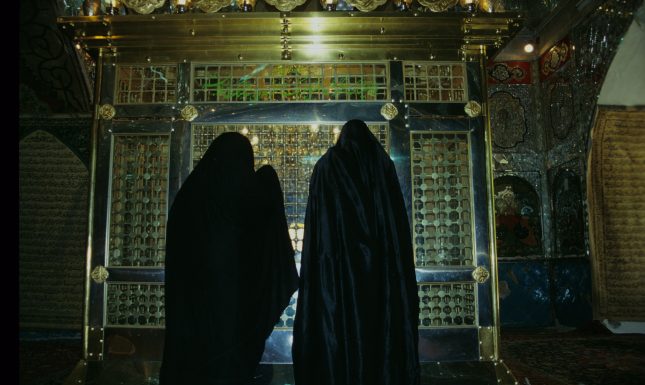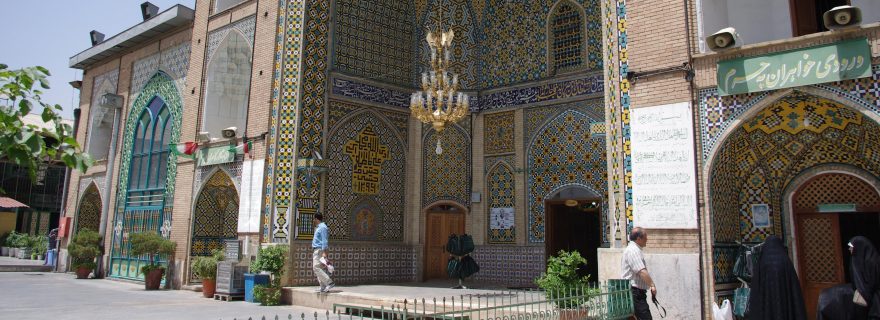Twelver Shi‘a Pilgrimage – Ziyara
Similar to the rising interest in pilgrimage worldwide, ziyara is becoming increasingly popular among Twelver Shi‘ites. These devotional journeys intersect with travel in the pursuit of religious knowledge, political symbolism, and leisure.
In addition to hajj to Mecca, Muslims all over the world participate in pilgrimage known as ziyara (Arabic, “visit”). Similar to the rising interest in pilgrimage worldwide, ziyara is becoming increasingly popular among Twelver Shi‘ites. Explanations for this include the improved political stability in southern Iraq which makes it possible again to visit shrines in the region, religious scholars’ and political leaders’ encouragement, the renovation and expansion of shrines, and tour-agencies organising pilgrimage roundtrips.
The shrines of the Twelver Shi‘a Imams are in Iraq (Najaf, Karbala, Samarra, Kazamayn) and Iran (Mashhad), although some Imams are associated with several burial sites. For example, while Husayn’s body is buried at Karbala, his head is said to be kept in the Umayyad Mosque in Damascus or, alternatively, at the al-Hussein mosque in Cairo. Shrines attributed to the Imams’ descendants, imamzada, can be found across the Middle East, Afghanistan, and India, and play an important role in local, regional, and global pilgrimage. For example, the shrine of Sayyida Zaynab outside Damascus is included in organised tours and attracts large numbers of pilgrims, while small imamzada in old urban quarters, at the outskirts of towns, and in the countryside are important in the lives of local people who visit them on a regular basis.
From a devotional point of view, the purpose of ziyara is to pray and remember God, honour God and the Imams, renew one’s contact and understanding (ahd) with God and the Imams, seek intercession (shafa’a) through a favourable introduction to God (wasila), and be granted divine blessing (barakat). Pilgrims seek nearness to God and God’s blessing through the proximity presumed to exist between God, Imams, and imamzadas.
Pilgrimage guides (Arabic: kutub al-ziyara, Persian: kamil al-ziyara) explain recommended ritual behaviour (mansik) and etiquette (adab), including verbal prayers and gestures to be performed to benefit from the merits (fad’il) of the place. The proceedings involve standing or sitting by the sarcophagus (zarih), performing prayer units (rak‘a), reciting the Quran, and presenting supplications (du´a), placing the face on the tomb and holding the hand to the sarcophagus while kissing it. An additional customary practice is to attach a lock or a piece of fabric to the sarcophagus, called “binding the request for help” (Persian: dakhil bastan). The object is untied when the request for help has been granted.


Many people are, however, not able to make ziyara to shrines located far from home. To compensate, the notion of transmitting God’s blessing through mediating means is applied to create pilgrimage sites hosting relics, such as, swords, pieces of helmets, and armour said to have belonged to the Imams, or a footprint on a rock said to derive from the Prophet Muhammad or the Imams. Alternatively, people build proxies in their local environment. In India, it is common to build proxy shrines, small copies of great shrines in Iraq and Iran, to be paraded in the streets. In Iran, imaginary tombs (qabre) are constructed in private households and visited as ziyara by neighbours on religious holidays. At these proxy shrines, visitors place photographs of the beneficiary of their prayers, as their stand-in, paralleling the binding of objects on the sarcophagus in requests for help.
Another option is a mental pilgrimage, facilitated by official Shi‘a worship guidelines which has developed a liturgy for performing ziyara from a distance by performing prescribed prayers, ziyara namah. In recent years, some pilgrimage sites have also begun facilitating online pilgrimage. The shrine of Hazrat-e Masume and the Jamkaran mosque near Qom invite believers to send supplications by email. These emails parallel throwing papers with personal requests inside specially built boxes at shrines. Closer studies are needed to examine how online pilgrimage may change rituals of devotion.
In recent years, the study of pilgrimage has discussed how pilgrims combine visits to shrines with additional purposes, including the pursuit of religious knowledge, political symbolism, and leisure. One advantage of examining “intersecting journeys” is to get a better understanding of how religious life is not set apart from other aspects of life. Firstly, ziyara often intersects with the quest for guidance from religious authorities, marja‘ al-taqlid, “source of emulation”. However, the transmission of religious knowledge communicated to pilgrims and the extent to which pilgrims act as carriers of knowledge on their return home remain understudied. Secondly, pilgrimage journeys can also turn into symbols of resistance when pilgrimage sites and practices become political targets. When al-Qaida in 2006 attacked the shrines in Samarra and a sectarian war erupted between Shi‘a and Sunnis in Iraq, lasting until 2008, pilgrimage participation became a symbol of strength among the Shi‘ites. Lastly, ziyara to local shrines is often combined with leisure, as people come together to pray and listen to sermons, and spend time with friends to socialize and converse, drinking tea and eating. Since shrines are usually divided into a male and female section with separate entrances, they are particularly attractive to women’s gatherings that combine religious observance with socializing.
The rising interest among Twelver Shi‘ites in ziyara is thus facilitated by political, theological, financial, and organisational factors, which make pilgrimage more attractive and feasible to pilgrims worldwide than before. Pilgrimage, moreover, often intersects with other journeys. As such, living a religious life interconnects with other aspects of life, such as acquiring relevant knowledge and guidance, expressing solidarity or resistance, and cultivating a healthy social life.
This blog is based on Ingvild Flaskerud’s previous and ongoing research into Muslim pilgrimage, published for example in the edited volume Muslim Pilgrimage in Europe (Routledge 2018).



1 Comment
That's interesting especially because of the importance of pilgrimage among Shias. I have read some blog posts about pilgrimage among sects of Shiism other than Twelvers. you can take a look if interested.
https://shiatent.com/blog/